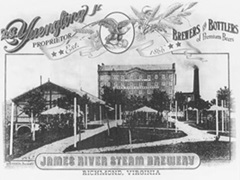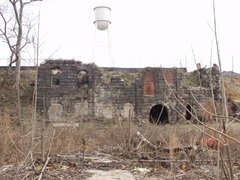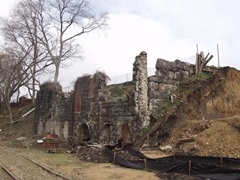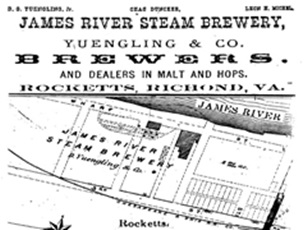In response to some postings on civilian reenactor blogs about things people would like to tell new recruits, I decided to make one for people who are taking up this grand old hobby for the first time and wish to do a military impression.
(**Author's note: I am really inclined to think "hobby" is a rather belittling term and sort of an understatement, given what we do is more like an alternative lifestyle that, for some, borders on a mildly disturbing obsession)
Just like starting your first day at a new job, many rookie reenactors going out for the first time will feel overwhelmed, and in some cases intimidated, by the flood of new information to take in and things to learn, as well as the 'peer pressure' to look, dress and act like everyone else.
I know when I started in 2011, I was very nervous and awkward at my first few events. My borrowed uniform and clothes felt scratchy and seemed made to fit a gorilla, I couldn't stop sweating from overexertion. I was anxious about looking sharp, and trying not to mess up during a drill or be seen doing something out of character in view of the public. I was very self conscious about all my movements, whether my suspenders were on backwards and if my hat was on straight, if my shoes were tied, trying to stay hydrated without having to go to the privy too much and have to strip off all my gear, and so on and so on...
There was also the fear of being labeled a "farb" as my impression was incomplete or not expensive enough. And as if all that wasn't overwhelming, on top of all that I was worried about if I brought enough food to last the weekend, was my gunpowder dry, whether I would be able to sleep or not, being too cold or too hot, what if I get hurt or injured in an accident... what if I had not planned for some contingency... And then I was afraid of looking 'weak' in front of the older hardened veterans, many of them ex-military, because I was obviously not in shape and might have trouble keeping up with those gritty Vietnam jungle commandos. I remember most of my first year as being very awkward and unsure of myself.
But as time went on, and I went to more events and started to make some friends, I felt more comfortable. I was less self-conscious, my uniform somehow started to fit better and the wool didn't bother me as much, and my 'pards' helped me out with a lot of advice gained from years of experience.
Since I became a reenactor, I think I have matured beyond my years and become a different person. Not only wiser, but tougher, stronger and more resourceful in rough situations.
So for the benefit of people who are relatively new to this adventure of being a living historian, I plan to make this post into a compiled list of 'tips' or 'tricks' for the greenhorns among us. Some of these things I learned myself the hard way, others were taught to me by seasoned veterans with 20-30 years of experience. Anyone who reads this journal may feel free to add some of their own advice by leaving comments as well. This is by no means an exhaustive list either, it will be a perpetual work in progress. And they are numbered for the purposes of looking like an official list, but are actually in no particular order. Obvious stuff first. So here goes!
ADVICE ABOUT FIRST JOINING 'THE ARMY'
1.
Don't be shy. The best way to join a reenacting group is...walk up and talk to someone at an event! Most reenactors like to talk to the public. Express your interest in joining, and ask to speak to their commanding officer (the guy who barks orders and dresses differently). Ask for a business card or a website link where you can sign up, find out where most of the group is from, and when their next event is. Fill out an online registration form to get your name on the mailing list, and pay your dues on time by check. (Checks leave paper trails and help them keep track of who pays their dues on time)
Then go to their first annual
company meeting (usually in mid-February) and learn about the scheduled
events for the year. This is also a good time to introduce yourself to the group and meet the people you will be 'serving' with. Don't feel afraid to speak up and ask questions, which in fact leads to my first important point:
2.
THE ONLY DUMB QUESTIONS ARE THE ONES YOU DON'T ASK!
3.
TRY BEFORE YOU BUY. Borrow gear first! Don't buy anything until you go out a few times and see if you like what we do. It's not for everybody. And putting together an impression will drain your bank account way faster than you realize, because in the words of Robbins Diamonds, your equipment can cost "As little as $400 or as high as the stars" There is virtually no limit to how much some people are willing to spend for this hobby. Be reasonable and buy only essential gear first. Ask around for sutlers that have the best bang for your buck. And sign up to an online forum like
www.cwreenactors.com, you will see lots of used gear going up for sale by people who are getting rid of extra gear or leaving the hobby. Get a second opinion from an experienced person before you buy an expensive item, to avoid the sting of buyer's remorse.
3.
The first things you should look into getting (but also among the most expensive) are a pair of shoes and a rifle. These are the hardest things to borrow. Good shoes can cost up to $200 for custom sizes, and the price of rifles has skyrocketed in the last 15-20 years. A 3-band Enfield used to be 300-400 and now they are up to 650-800 dollars.
Hard learned advice: Get a good job before you try to be a reenactor. This is volunteering that costs you money. Not all groups have trailers full of loaner gear to be lent out. In the case of my new group, I had to borrow an old rifle from the Captain of the group who hardly ever used it. After the first year, you should really have as much of your kit together as possible.
4. There is a proper time and place for jokes and sarcasm, and that is around the campfire. Don't do it through email or online forums. Reenactors use these things as communication tools for delivering important information and RSVP'ing for events. Nine times out of ten somebody will misunderstand your humor and take offense to it. Remember the same thing read in writing, and said out loud in the right context, can mean two entirely different things. Take my word for it and just
don't do it unless you've been with the group for a long time and everyone knows you very well. Rub the wrong person the wrong way enough times and you could get thrown out of the group.
5. Rule for new recruits: "Mouth Shut, Ears Open" If you are very new to all this and don't know much about the time period you portray, you are better off listening than speaking. Listen to the older guys, and you will learn lots. Pay attention to the way they address the spectators. Pay attention to orders given you by officers and learn them well, because someday you may be promoted in rank or become an officer, and be expected to give those same orders. A US Navy training manual from 1940 said it best. "Know your job. Know the job ahead of yours." Also remember the things you say and do while in uniform reflects not only on you, but on the men above and below you, your company, your battalion, your regiment, your division and the entire US Army!
6. Do your homework. Read
Hardtack & Coffee if you are on the Union side, and read a book like
Co. Aytch if you are on the Confederate side. These books were written and published in the 19th century by veterans who lived through the actual war. Who better to learn from than those who know it best, the ones who were there! If you have a question about the particulars of camp or army life in the 1860's, these books are your Holy Bible and have most, if not all, the answers you need. But in general, most reenactors read lots of books. If you do want to bring a book to read in camp, make sure it is one that dates from the period. But don't take out your family's priceless heirloom Bible or an antique book. The first time it gets left in the rain or you spill coffee on it, you have ruined a museum piece. There are reproductions of contemporary literature that you can buy.
ADVICE FOR A SHARP IMPRESSION.
7. Double tie your shoelaces. The leather laces on our shoes come loose and untied very easily, and you will look down 5 minutes after you tied them and say "Darn, I swore I just tied those." It also looks mighty bad if soldiers are standing at attention and suddenly one drops to his knees to tie up a bootlace. Just double or even triple tie them. Trust me.
8. The canteen goes on last. When putting on your leathers and accouterments, the cartridge box sling should go underneath the waist belt, to prevent it getting away from you on the run. And you will quickly realize why the canteen goes on last, over everything else. Shorten the belts and slings so that they are just long enough to fit under the waist belt. The haversack is best carried not on the hip, but almost at the side under the arm. This will prevent it banging against your leg when you march. You may want to shorten the canteen strap by putting a knot in it as well. You really don't want this stuff swinging around.
9. Keep the shirt and coat collar flat and the top buttoned up. Reenactors will tell you that nobody in the Civil War ever walked around with their coats unbuttoned, but we know from photograph evidence that this isn't true. If it was hot sitting around in camp, men weren't too dumb to unbutton their heavy wool overcoats. Just be sure to button up for drill time, parades and anything involving spectators.
10. DON'T LOCK YOUR KNEES. When you stand at attention, your knees should be slightly bent. Keeping your knees straight and locked actually induces a little-known condition in which the circulation to your lower legs and feet gets cut off after a few minutes, resulting in your collapse. Anyone in the military can tell you this.
11. Salute with palm of the hand open. The flat-handed karate chop salute is a 20th century anachronism. The open palm of your right hand should face the officer and the tip of your fingers should point to your eyebrow. This is how it was done from about the time of the American Revolution to the Span-Am War. It was meant to show your hand was empty and you had no weapon in your right hand, therefore it was a gesture of peace.
12. Keep the cap/hat/kepi/Hardee hat on when in the ranks. It looks more "military." (Tip: carefully pulling out the stitching on the leather strap across the brim allows you to use it as a chinstrap. This was originally called a "Stampede strap" and it was intended for just such a purpose, to prevent the hat from blowing off while running. There is evidence to show that soldiers did this.) Tipping your hat was not the proper way to address a lady. Removing your hat and showing it to her was far more gentlemanly. Ladies will applaud you for doing it because most reenactors don't. It shows good manners. All women during the 19th century were to be treated like a princess. Do not remove your hat while in the ranks unless you are listening to Taps or the National Anthem.
13. When wearing the knapsack and blanket roll as a kit, put the shoulder straps through the blanket roll straps. It will keep the knapsack higher up on your back, and the weight of the blanket won't pull the backpack away from you. I've seen reenactors use bits of rope, shoelace or even 1x2 blocks of wood to help support the pack, but this technique works better than all those other methods. It also reduces strain on the strap anchors where they meet in the middle, because it diverts the load bearing to either side. Wearing the knapsack became much more comfortable after an old veteran showed me this. I will include a sketch to demonstrate what it should look like.
14. Civil War soldiers carried their muskets with muzzle up when loaded. This 21st century way of carrying your gun with muzzle angled down at the ground is not only farby, it's dumb. The powder would run out of the barrel on to the ground. This should be a no-brainer but I've seen people do it.
ADVICE FOR GOING TO YOUR FIRST FEW EVENTS.
15. Everybody helps everybody set up and take down their tents. This is a common courtesy. Reenactors help each other. If someone has a lot of gear to unload from a truck, go over and help them out. Don't just sit by the fire and watch other people work. Everyone will thank you for this. The rule in my first group used to be nobody drives away until the camp is completely broken down and everything is loaded into vehicles. Leaving an event early, especially without telling anyone, is generally frowned upon. Because that is implying you don't want to help anyone but yourself.
16. Get in the habit of saluting an officer whenever you see one and calling him "sir". This is really only for the public's benefit, obviously you don't need to salute every officer all the time when no public is around. But it's a military thing to do and shows the proper respect for your superiors. Officers with shoulder straps get saluted only, not non-commissioned officers such as sergeants. I have been admonished at WWII reenactments for saluting noncoms. Generally, we salute officers on our side and not on the other side. Confederates aren't even required to remove their hats or salute when the Federal flag passes in a parade.
17. BRING LOTS OF WATER. Always bring more water than you think you'll need. Most big reenactments have water tanks or trucks where you can fill up your canteen, but these will be empty by Sunday's battle, almost guaranteed. Reenactors have said that they will sweat off a pound or two during the summer; this is not an exaggeration.
18. Ask before you sit. Generally, it is common courtesy to ask if a seat belongs to somebody before you sit down in it. If you don't bring your own furniture to an event, sit on the ground unless you ask first.
19. Stay out of other people's tents. A tent is a person's home for the weekend. They keep things hidden in their tent they do not want the public to see. If an officer asks you to bring him something from his tent, do as ordered. But otherwise keep to your own tent.
20. If camping near cavalry or artillery, don't feed, pet or bother the horses. And for the love of all that's holy, stay away from the cannons. Cavalry and Artillery reenactors spend about 10 times what you do on their equipment, and hauling it to and from events. Be respectful of them and don't touch their stuff. Also horses that are tied up to ropes are tied up for a reason, especially if a battle is going on. They might be newly purchased or young horses that spook at sounds of battle. Don't make any sudden movements to spook them and don't frighten them. And cannons are just downright dangerous.
21. Straw is what you sleep on. Hay is food for horses. Learn the difference. Taking hay away from horses to use for bedding is frowned upon. Straw always looks dead and feels dry, hay might be greenish in color.
22. Put together a repair kit. Civil War reenacting gear is made of leather, and leather is prone to break sometimes. I recommend putting together a basic repair kit that you keep in the same place as your rifle cleaning kit.
My repair kit is a simple cloth bag with lots of things in it to tie stuff together. Bits of string, a small coil of rope, twine and an extra pair of leather shoelaces. A bit of shoelace can secure a brass plate from falling off, tie together two broken pieces of leather, repair a musket sling or secure just about anything. I also recommend taking an awl with you to punch a hole in the leather so you can thread the bit of shoelace (an awl is a screwdriver handle with a pointy spike instead of a screwdriver tip) I also have a tool meant for sewing leather with a very thick needle to stab through it.
This is the tool It's also handy as an awl. Also take some kind of superglue to repair shoes. If your shoes are cheap, your sole could split apart when dirt gets worked in between the layers. Mine did.
23. Cut up old cotton male undershirts to use for gun cleaning patches. Cut squares about 2 inches x 2 inches and no bigger. Cleaning patches aren't expensive, but it's another thing you don't have to buy. Same for rounds. Rolling and filling your own cartridges is labor intensive but cheaper.
If you want a container to keep your bottle of oil, repair kit, tools, gunpowder and musket cleaning kit in, refer to
The DIY Ammo Box Post. This is a neat, sturdy box that you can leave out in the open near your tent and you don't have to hide. You can also buy these from some woodworkers near Gettysburg, but they vary in quality.
24. It makes sense to have two rubber blankets. If you have a dog tent, the extra rubber blanket is invaluable. You normally sleep on your rubber blanket, but when it rains and your tent leaks, what do you do? Throw it over the tent. And then you have no ground cover. The extra rubber blanket can keep you more dry, and it can also seal one end of your dog tent. Tie the grommets of one side together with your extra shoelaces. During windy rainstormy weather, the following setup with two rubber blankets seems to work the best for keeping you dry:
 |
| I first saw Sergeant John Martin of the 1st Pennsylvania Reserves set up his tent this way. But I'm pretty sure he wasn't the first ever to do it. |
25. Another use for shoelaces: Keeping your dog tent from blowing over. What inevitably happens to dog tents is if they aren't pitched solidly, they fall down. This happens when the uprights and the crosspiece aren't secure. Tie the shoelaces around the crosspiece where it rests in the crook of the uprights, and thread it through the buttonhole. Tie them tightly, and your tent will stay up.
--"A good canteen tip to add...soak the outside of the canteen when you
fill it, it helps keep the water cool, and adding a leather canteen
strap is a cheap addition and sharpens the impression." -from Rob Riley, reenactor since 1988. Leather canteen straps last longer, don't get dirty as easily, and can take much more punishment than the cheap cotton ones that come with the canteen.
"You may want to wear earplugs during the battle. Of course, earplugs were not around during that time but, as I understand, hearing loss is irreparable. Earplugs are a great idea, especially if the guy next to you fires a double load of powder. Look in your local drugstore for the clear putty-like earplugs or the spiral ones that go inside the ear canal, these will be the least noticeable." --Reenactor Bryan Cheeseboro. Please, stay away from the cheap hot pink or neon orange foam ones. They will just fall out of your ears anyway.
"I have not done it yet but I say if it's a very hot event, take off the jacket and fight in your shirtsleeves. I was in a debate on Facebook about whether or not soldiers fought without their coats in very hot weather. I don't know for certain but thanks to modern heating and cooling, we are not under the same conditions people were in 150 years ago. To go from wearing t-shirts, shorts and sandals one day and then a wool uniform the next is a big change for the body." --Reenactor Bryan Cheeseboro
ADVICE FOR STAYING COOL AT VERY HOT EVENTS.
26. Pour water down the front of your shirt. I found this cools me down faster than anything else.
27. Don't be a hero. At events such as the 150th First Manassas where temps soared to 110 degrees, people were dropping out of the ranks right and left.
DO NOT just decide to "tough it out" if you think you can't go into battle. You will get hurt. If you are tired and your mouth feels dry, your skin turns red, or you feel dizzy or faint, tell somebody and get out of the sun. If you were sweating a lot and suddenly stop sweating, you are about to experience heatstroke and could be severely dehydrated.
28. Much as heat escapes through the top of your head, coolness enters through it. Putting a tin cup of cold water to your forehead or putting a chunk of ice in your hat will cool you very rapidly, as blood in your brain gets pumped down through your body.
ADVICE FOR STAYING WARM AT VERY COLD EVENTS.
29. Sleep near the fire and sleep with your clothes on. You may think it's warmer inside your tent, but canvas tents actually trap moisture as condensation from your breath and make you freeze. The best way to keep toasty is use the "Reenactor Taco" Put your coat and your great coat on, cover your head with a wool knit cap and put on gloves, then get into your blanket. Fold the blanket lengthwise in half, then fold yourself in the blanket like a taco, so all the layers are keeping you warm. Face the fire with the open side of the taco. For Fredericksburg and the really cold events, you may want to look into getting a subzero sleeping bag. US Army surplus ones from the Vietnam era are relatively cheap. They have a quick release zipper so you can get out of them easily. Don't freeze because "It's what the soldiers did" You could be dead the next morning. It's happened to people before.
30. Keep the fire burning all night and don't let it go out. Find a volunteer to sleep near and tend to the fire. If nobody volunteers, then every time you get up to leave your tent during the night to go use the privy, throw a log onto the fire. Have everyone do this and it will blaze all night. Few things are more miserable than trying to light with numb fingers on cold, damp wood before you are able to cook your breakfast.
CONCERNING MUSKETS
Reenacting is a dangerous hobby in that we fire loose powder charges out of muzzle-loading muskets, and if you follow these important safety rules everything should be fine. But never forget, the firearms we use are weapons of war, were built and designed to shoot and kill people. Safety cannot be emphasized enough.
1. Guns are tools for destroying living things. Nothing more, nothing less. They don't kill people by themselves, but in unsafe hands they are deadly. Treat them with respect and with utmost caution.
2. Always elevate at 45 degrees when within 50 yards of the "enemy". There is no reason to aim directly at anybody. If cartridges are loaded improperly or foreign objects are in the barrel they will become deadly projectiles.
3. NEVER EVER EVER EVER draw your ramrod on the field. A ramrod left in a barrel and fired out of a gun will kill someone. At 900 feet per second with 60 grains of powder charge behind it, a three foot long piece of steel at close range will go right through just about anything, be it trees, houses or people. At some events they will even make us remove our ramrod and leave it in camp.
If you are seen drawing a ramrod in battle you can be forcibly removed from an event.
4. WHEN IN DOUBT, POUR IT OUT.
Double loading was a common mistake of inexperienced soldiers in the real Civil War. There were jammed muskets found on battlefields with up to eight cartridges stuffed in the barrel. If you pour more than the regulatory 60 grains of powder and shoot it, at the very least you'll damage your hearing, and at worst your gun could explode, burning or disfiguring you and anyone else around you. Don't do it, it's not funny. Sometimes people want to load 80 grains for a bigger bang in parades, but it really isn't worth the risk of injury.
It's easy in the chaos of a firefight to forget if you're loaded. If you're afraid of loading more than once, Just remember this simple rule: when in doubt, pour it out. Point your gun at the ground and let the powder spill out on the grass. Grind it in with your shoe if you're worried about fire hazard, and the moisture in the dirt will render it useless.
5. Don't ram paper in battle. It can start fires because burning bits of ash will shoot out and drift to the ground.
6. If you see smoke coming out of the hole in your percussion cone, there could be a small fire inside the barrel. Keep the muzzle of the gun pointed skyward and just wait for the smoke to stop. Don't reload if you see smoke, pouring more powder down a barrel with burning embers in it is a 'sure fire' way to lose a hand. don't recap until all the smoke is gone.
7. If you are ordered to "ground arms", lay your rifle gently on the ground with lock plate and hammer facing UP. this will keep ground moisture out of the lock assembly.
...and above all, remember we are here to recreate the life of a soldier, not the death of one.
Realism only goes so far. If everybody was 100% authentic, we'd all be dead by Sunday.
When I think of more, I'll write more. I welcome comments!










